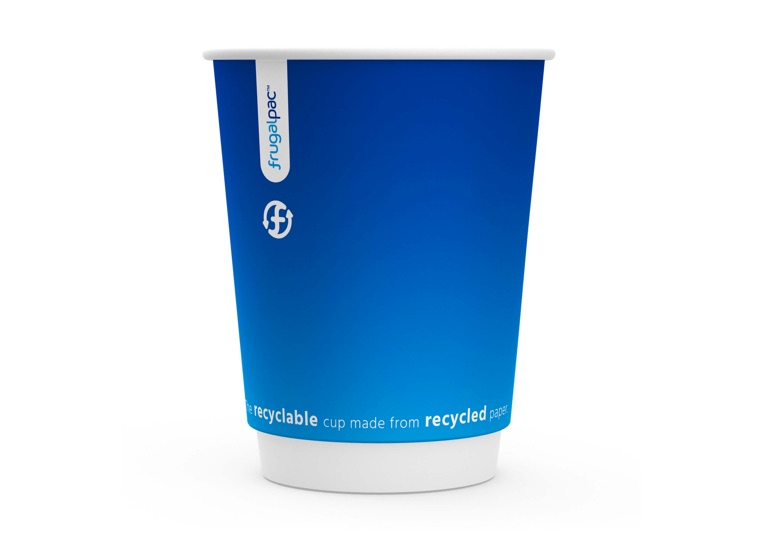It’s an issue that’s actually quite tricky to unpick.
Quite understandably, many retailers and manufacturers don’t want to come clean about the proportion of their cups that gets recycled. Most of the time, they quietly rely on the word ‘paper’ being more environmentally-friendly than the word ‘plastic’. ‘Paper cups’ sounds just as benign as the little cups you folded out of old newspapers at primary school. Trouble is, conventional paper cups aren’t actually made out of what most people would call ‘paper’.
Conventional paper cups are constructed from virgin paperboard bonded on one side to a robust plastic film. Let’s pause here to consider what that actually means.
The sheets of card (called ‘paperboard’ in the trade) are made from freshly-manufactured paper, from freshly-felled trees (that’s where the ‘virgin’ comes in). The paperboard therefore isn’t recycled. Its then treated with ‘sizing’ or waterproofing chemicals to make the paperboard leak proof and coated with plastic before its made into a cup.
No one wants a fistful of hot coffee.
It’s the tightness with which the plastic is bonded to the paperboard, together with these leak-proofing chemicals, that makes conventional cups (even those that claim to be recyclable) so difficult to recycle.
The recycling process at paper mills starts with the waste paper being emptied into vast drums filled with ambient-temperature water. If you’re old enough, imagine a super-sized washing drum half of a twin-tub washing machine.
The blades in the drum churn the contents until they become a soft pulp which is filtered away and made into paper again. It’s not uncommon for a stray piece of plastic to get into the drum – a magazine wrapper, for example, goes in with a heap of newspapers. Such things are easily caught and later removed by the drum’s filters.
In order to run profitable businesses, recycling plants run the pulping drums for the most economical amount of time required, usually no more than 20 minutes. It’s long enough to pulp a wide selection of paper products.
Imagine squishing newspaper in a sink full of warm water for 20 minutes. You’d have a nasty mess and quite smooth pulp.
Put conventional cups in a standard repulping cycle for 20 minutes and they won’t break down. The plastic coating is bonded so tightly to the paperboard that, at the end of the cycle, it hasn’t dispersed and what should be smooth pulp is full of contaminants – large bits of paperboard and plastic – and the chemicals used to waterproof them.
These cannot be used in making new paper and will get thrown away into landfill.

